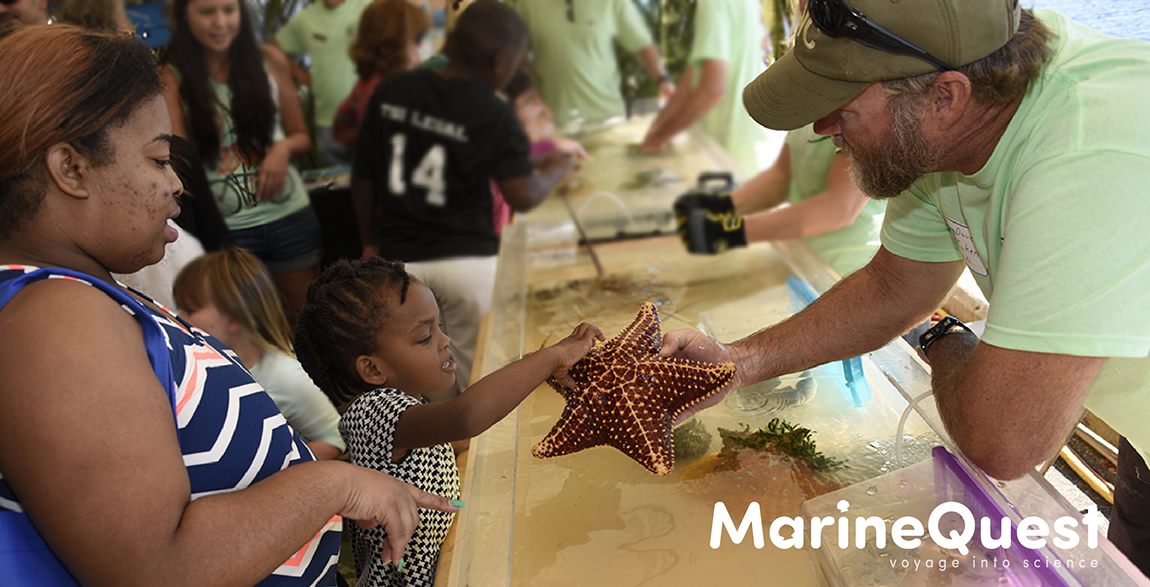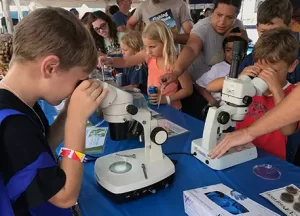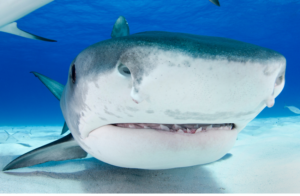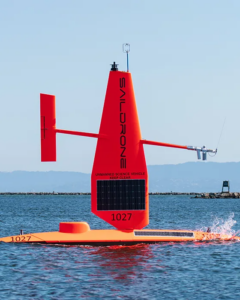MarineQuest is an opportunity to meet the scientists at the Florida Fish & Wildlife Conservation Commission (FWC) and its Florida Fish and Wildlife Research Institute (FWRI). It’s held in conjunction with the St. Petersburg Science Festival, where participants can meet scientists from the University of South Florida’s College of Marine Science, the National Oceanic and Atmospheric Administration, the U.S. Geological Survey, the National Aeronautics and Space Administration, National Weather Service, the Florida Aquarium, the Tampa Bay Regional Planning Council and the Tampa Bay Estuary Program.
Scheduled for Saturday, February 8, 2025 from 10 a.m. to 4 p.m., the two events transform downtown St. Petersburg into a wonderland of marine exploration and education. Both events are free, and offer the opportunity for families, students and marine enthusiasts to dive deep into the mysteries of Florida’s ecosystems.
More than 15,000 people are expected to attend the daylong events, held at FWRI’s waterfront campus and the adjacent USF St. Petersburg campus. This year’s events are highlighted by hands-on activities, displays and live demonstrations designed to captivate and educate visitors of all ages.
One of the most popular exhibits at MarineQuest is the touch tank experience where visitors can get up close and personal with a variety of marine creatures. Children can gently touch starfish, sea urchins and horseshoe crabs. Knowledgeable volunteers share fascinating facts about each species, sparking curiosity and a newfound respect for marine life.
Other exhibits include:
- Learn about sharks and rays in a hands-on experience with scientists sharing identification tips using real sharks.
- Get immersed in the biology of fish in Tampa Bay with hands-on demonstrations examining tooth shapes and feeding strategies of each species. Learn how the FWC Gut Lab collects and identifies different diets and how they can identify partially digested food using a vast collection of jawbones. You will also learn how this essential dietary data is used to help fisheries management decisions in Florida.
- Play Coral Conga to discover what is happening to Florida’s coral reefs. Participants become different species of coral to experience life on the reef.
- Fish Bingo at the Offshore Fisheries Monitoring exhibit allows kids to practice their scientific skills by helping to identify different fish species in FWRI’s underwater monitoring videos. They learn about fish populations and health, and the unique data collection gear used to study offshore habitats.
- Dive into the world of microscopic algae at the red tide monitoring exhibit, where kids can peer into microscopes to get a first-hand look at some of the technology used to monitor algal blooms.
- At the shellfish fisheries research station, learn why horseshoe crabs are so unique and test your strength against a stone crab.
- Learn about mangroves – also known as walking trees – that thrive in saltwater along Florida’s coastlines and protect it from hurricanes.
- Participate in a mock rescue of manatees aboard an FWC boat and transport vehicle. Staff will be on hand to explain what to do if you see a sick or wounded manatee, how scientists map locations of manatees from satellite data, and what you can do to help protect manatees.
- Meet the scientists studying sandhill cranes, one of Florida’s largest and most charismatic birds. They’ll be talking about how researchers are working to understand better how this imperiled species is surviving in a rapidly urbanizing state.
- At the pollination station, you’ll get to meet the researchers studying Florida’s amazing insect pollinators with interactive games and activities.
- Learn about how adaptations allow photosynthetic cells to float, sink and survive, then design, build and name your very own phytoplankton.
- For kids with an artistic flair, the fish printing station offers a unique way to create memorable souvenirs. Using real fish, non-toxic paint and rice paper, participants can make colorful fish prints to take home. This traditional Japanese art form, known as Gyotaku, is an educational experience, teaching visitors about different fish species and their habitats.
More interactive and hands-on exhibits will be underway next door at the St. Petersburg Science Festival focused on STEAM (science, technology, engineering, art and math) learning, including:
- A mobile aquarium with a variety of fish and other marine life.
- A touch-a-truck exhibit where guests can explore a variety of city vehicles, an airplane and a Saildrone, which is an uncrewed surface vehicle designed to go where ships cannot and built to survive the dangerous conditions of the ocean.
- A seagrass maze that allows participants to travel through a seagrass meadow and collect organisms to build a food web.
- A shark exhibit where visitors see real skeletons, jaws and skin, along with a virtual reality experience that involves a shark show and tell.
“Science is relevant to our daily lives,” said E. Howard Rutherford, the associate vice president of development at USF St. Petersburg and co-founder of the St. Petersburg Science Festival. “This event humanizes science by taking scientists out of the lab and bringing them together with the public where they can ask questions, generate ideas and talk about research.”
Parking for both events is available downtown at the SouthCore parking garage, located at 101 1st Avenue South, St. Pete– $5 before 2pm and $10 after 2pm. A free shuttle will transport visitors to the event entrance. Free trolleys run to the St. Petersburg Science Festival and MarineQuest on Saturday every 10 minutes from 9:30am to 4:30pm.
Originally published Jan. 28, 2025



